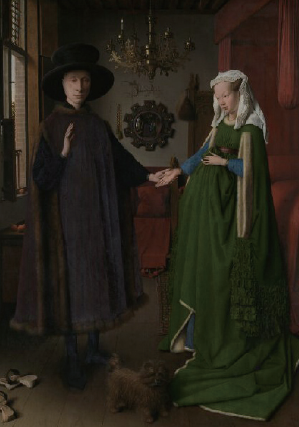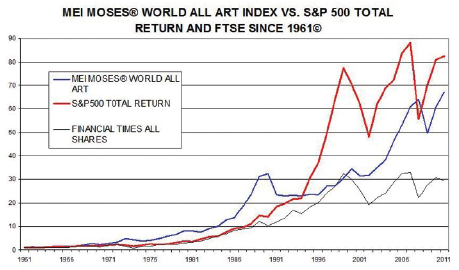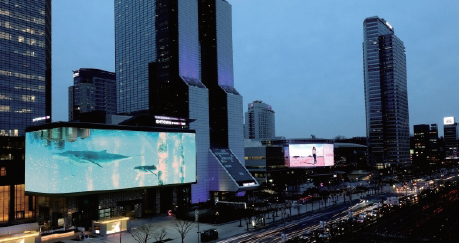A shocking incident recently happened at Sotheby’s auction in London. Banksy, the anonymous British street artist, destroyed his painting Girl with Balloon, which was auctioned off for about £1.4 million, with a shredder. This caused people to think about what it meant to set a price on artworks in the capitalist market. In fact, artworks and commerciality have been inseparable for a long time and have changed in different ways over time. The Sungkyun Times (SKT) now explains the history of art commercialization and its double-sidedness, suggests many perspectives on art commercialization, and shows its future prospects.
Historical Flow of Art Commercialization
Art Before the 19th Century
Even before the birth of capitalism, commerciality already existed in the field of art. In the past when there were no official art markets, most buyers of art were royalty and nobles, religious people and the rich. Artists had to do their work according to orders from sponsors. They just served as craftsmen who met a particular sponsor’s taste, not as those who emphasized their own artistic motives. If sponsors were rich merchants, they asked artists to paint luxurious pieces for them that could express their wealth. For example, The Arnolfini Portrait by the Netherlandish painter Jan van Eyck was painted for the wealthy merchant to show off at that time. This trend made it hard for artists to secure their artistic values.

In the 18th century, there occurred two tremendous changes in Europe, which influenced the art market: the French Revolution and the Industrial Revolution. The old feudal system collapsed as a result of the French Revolution, so artists became able to deal with a greater variety of subjects than before. There was no more Baroque or Rococo art, which was required to support the feudal system. In the meantime, the Industrial Revolution led to an economic change, making a massive production of products possible. Thus, the status of craftsmen was downgraded to routine labor, but artists’ own inspirations and originality became important.
At that time, collecting art became very popular in England and France. Many artworks were sent to England, which was safer than France during the French Revolution. This was the beginning of the establishment of many famous auction houses such as Sotheby’s and Christie’s. As a result, the artworks for a few upper class were released to the general public at the auctions. Also, public interest in art increased and various artistic discussions emerged. This allowed more people to consume art, regardless of their social status.
Modern Art Encroached by Capitalism
The general public’s access to art further increased after the 19th century. In particular, later in the 20th century, the United States (US) met its golden age in almost every area, including in the field of art. At that time, young Americans were familiar with mass consumer culture, and pop art became trendy. For example, Andy Warhol, who was one of the artists that had a huge influence on pop art and contributed to commercial art, said, “You can be watching television and see Coca-Cola; you know that the President drinks Coke, Liz Taylor drinks Coke, and just think, you can drink Coke, too.” His famous quote reflected the representative concept of modern society, equality. Under capitalism, paying money makes people enjoy their lives equally, regardless of their financial status. In other words, pop art removed division between the existing art consumers and the general public, which increased public demand for artworks. Art gradually became an investment target beyond its commercial value. Due to the increase in demand for artworks, an auction market started to concentrate more on modern artworks than classical ones. As a result, the prices of those works of art rose astronomically by the end of the 20th century. Moreover, art is even being capitalized nowadays. The appearance of the Mei Moses Art Index, which identifies trends in art transactions at major art auctions, is an important example. In that the index signifies that art itself has become an economic standard like money.

Double-sidedness of Art Commercialization
The Positive Sides of Art Commercialization
➊ A Strong Motivation for Improved Productivity of Artists
Commercialization of art can be a strong motivation for artists because it causes their works to be traded and paid for by people in the market. In fact, they should accept the commercialization to some degree, because they have to make profit with their works to purchase materials for creating works and earn a living. Therefore artists not only focus on creating their works but also establish marketing strategies to improve the competitiveness of their artworks and to become recognized in the art market. For instance, the famous Spanish painter Pablo Picasso was tired of hunger and poverty when young, so he repeatedly visited all the galleries in Paris and asked if they had his works, which nobody knew about at the time. This marketing aroused the gallery’s curiosity about Picasso. Some galleries started looking for his works soon after, and Picasso began to make inroads into the art market. After Picasso became famous, he collaborated with Léonz Rosenberg, one of the best art dealers of the day, to consistently promote his works. He also tried to differentiate his works in many ways, such as providing his works only to the Kahnweiler’s gallery in France. In short, with these marketing techniques, Picasso could gain the greatest recognition for his artworks.
➋ Better Working Conditions of Artists
Commercialization of art has also improved artists’ working conditions. In the art market, selling artworks means that artists get paid in return for their works. Before commercialization of art, famous painters like Paul Gauguin had to work two or more jobs. As they started to sell their artworks, however, many artists could quit any part-time jobs that they had and concentrate on making art, pursuing their artistic value.
➌ Expanded Art Consumer Groups and Diversification of Art Fields
In addition, commercialization of art allows the general public to appreciate artworks better. Before art commercialization, those who could generally afford to buy artworks were the upper classes, so both the field of art and subject to art were limited. On the other hand, since the commercialization resulted in the marketization of art, the public from various classes emerged as consumers of art. Artists began to create works for many unspecified consumers, diversifying the field of art and its associated subject matter. In the Netherlands of the 17th century, for example, when the country had the most vibrant art market based on its economic growth, main consumers of art were merchants and the middle classes. In particular, artworks that can be appreciated easily in daily life like still-life and landscape paintings were popular at the time. These were newly emerged fields of fine art against most of the existing art fields, which were religious, magnificent, and commissioned by the church and a few of the upper class.

The Negative Sides of Art Commercialization
➊ Art Judged Only by Its Commercial Value, Not by Its Artistic Value
There are some problems with commercial art that targets the public. Pop art, for example, has the risk of becoming incendiary to some degree because it needs commercial popularity. Theodor Adorno, a philosopher who deals with aesthetics and sociology, criticizes this situation referring to it as a “culture industry.” The excessive sensationalism and violence that commercial art may deliver have the possibility of undermining both artistry and morality of artworks. Moreover, the digital reproduction market where copies of the original artworks are made and sold at a lower price than the original price, is active. This causes devaluation of the original works and the shrinkage of the original works’ transactions. As the digital reproduction market usually handles copies of popular artworks, there are problems with narrowing the positions of challenging and less well-known artists. The market has appeared for the revival of the art market, but the artistic value of artworks may not be that recognized because of their commercialization. In art auctions, however, unreliably expensive prices are set on artworks. Thus, the value of art may become uncertain and can lead to a failure of accurate value judgment of art.
➋ Problems in Auction Structures
The auction structures interested only in sales rise are another problem of art commercialization. In auction houses, only artworks created by famous artists tend to get attention because of the structure of auctions. The price of artworks is measured through their artists’ negotiations with auction houses, dealers, galleries, and art collectors who recognize arts’ aesthetic and investment value and buy them. In particular, art collectors are important actors in the auction structure; no matter how novel the works are, they cannot get early attention if collectors do not choose them. Recently, due to economic depression, many buyers have become fearful that their collections may become impossible to sell. This fear caused well-known artists’ artworks to become even more popular. According to the Art Market Report 2017, the top 15% of artists’ sales accounted for 82% of the total in 2016. The structure also creates a monopoly of particular taste. There are collectors and “bluefish” in the art market. A “bluefish” refers to a person who wants to buy the work that a collector would buy. Since collectors mainly buy pictures of famous artists, collectors and bluefish can have a monopoly on the taste of the whole art market.
Prospect and Views of Art Commercialization
Prospect of Art Commercialization
Although there exists a lot of controversies around the art auction market, it has been flourishing these days. The size of the international auction market grew to $14.9 billion last year. Also, the domestic art auction market reached 189 billion. With economic development, the art consumer groups have expanded and the demand for artworks has increased, the size of the auction market is also expected to grow continually. In fact, Seoul Auction, which occupies 50% of the Korean domestic art auction market, plans to further expand by starting a new overseas auction service. The overseas auction service is a platform for proxy bidding when domestic collectors request items from global auction markets. Besides the auction market, art commercialization takes up almost every part of modern life in the form of brand logo and packaging design for advertising or marketing. It is because the boundaries between marketing aimed at obtaining money by using arts and arts aimed at expressing an artist’s own authentic sensibilities have become blurred. Furthermore, as technologies like display and augmented reality (AR) have been developing, new commercial art combined with diverse technologies continues to be discussed. For example, the Korean government has plans to make the whole the Convention and Exhibition Center (COEX) a global art landmark. For this, an electric signboard, which shows a hologram and media art will be attached all over the Korea International Trade Association (KITA) building next to COEX.

Different Points of View on Commercialization of Art
➊ The Auction Market’s Perspective
Some people think that the auction market can help people to develop their ability to appreciate art and to learn the trends of the art market because various works by various artists are exhibited all at once at auctions. On the other hand, some people think that auctions can be used to create other commercial value of art. In particular, like speculation in real estate, speculation in art has also been popular among people. They leave big profits by reselling artworks that they bought before.
➋ The Art World’s Perspective
The art world generally shows a friendly gesture to commercialization of art. For example, the Galleries Association of Korea held the Korea International Art Fair 2018 (KIAF 2018) in October, which was the biggest art market in Korea. The Korean Fine Arts Association (KFAA) also showed a favorable response to the fair. KIAF is an exhibition where artists gather and sell their works. Even though this is a kind of commercial market, it is considered as a great opportunity for the public to experience various genres of art.
Some people may underestimate commercial art, saying that it is made specifically for the purpose of selling. They think that the only objective of art should be to create aesthetic value, and thus, that commercial art does not have any artistic value. Commercial art, however, is already deeply involved in modern people’s daily lives. In the near future, it will combine with developing technologies and have a much bigger impact over time. Although there are still negative effects of art commercialization, it is desirable for Kingos to have a balanced view on commercial art and become more familiar with it.
